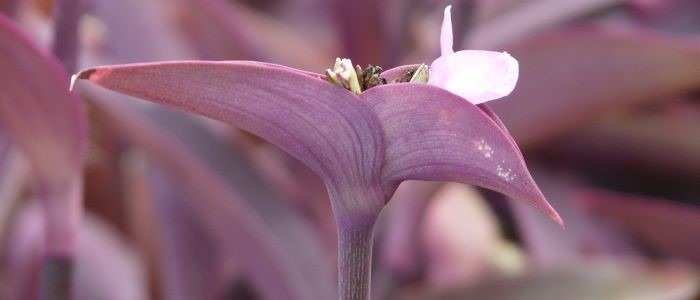The purple orchid plant is a stunning addition to any indoor or outdoor space. It’s really hard to resist the charm of these majestic plants, with their delicate petals and eye-catching blooms. Having Purple orchids in your home or garden brings an air of elegance and sophistication.
They have a long history of being a symbol of love and fertility, making them a popular choice for floral arrangements. They come in many different varieties to suit any taste or decorating style! This article will explore the fascinating world of purple orchids and share some tips on properly caring for them. So let’s get started!

Purple Orchid Plant Frequently Asked Questions
Are purple orchids real?
Yes, purple orchids are real and can be found in various species such as the Vanda coerulea and Phalaenopsis violacea. They are often sought after for their unique color and beauty, and require similar care to other orchids. With proper care, purple orchids can thrive and produce stunning blooms.
How do you take care of a purple orchid indoors?
When taking care of a purple orchid indoors, it is very important to provide it with the right amount of light, water, and air circulation. Place the orchid in a bright, but indirect light location, and water it only when the top inch of the soil feels dry to the touch. Make sure to avoid overwatering, as this can cause root rot. In addition, consider placing a fan near the plant to keep the air circulating and prevent fungal growth.
Purple Orchid Plant Care Tips
Purple orchids can be an exotic addition to any home or garden. But, like all plants, they need the right care to flourish and thrive. With this guide on how to care for your purple orchid plant, you’ll have a beautiful display of blooms in no time.
First off, you’ll need to find a spot for your orchid that gets bright, indirect light. This will ensure it has enough light to bloom without getting too much direct sun. It should also receive shade throughout the day so it doesn’t get too hot and dry.
When watering your purple orchid plant, you should do so in the morning and make sure you’re using water that is at room temperature. Water your orchid until it starts dripping from the bottom of the pot, then let it drain completely before putting it back in its spot. Don’t forget to mist your plant with a spray bottle to ensure it has enough moisture.
You should fertilize your purple orchid plant every two weeks with a balanced 10-10-10 fertilizer. Ensure you follow the package’s directions for how much and how often to fertilize. Overfertilizing can burn the roots of your orchid, so be careful not to overdo it
Finally, remember to prune your purple orchid plant as needed. Cut off any dead or dying blooms to encourage new growth. And be sure to remove any yellowing leaves, as these indicate that something is wrong with the plant and it needs attention.
How to Propagate the Purple Orchid Plant
Propagating the purple orchid plant to create more of these stunning blooms doesn’t have to be complicated. With the right instructions and tools, anyone can propagate their own unique orchid plants!
The first thing you’ll need is a mature orchid that has finished flowering. When selecting your orchid, make sure it is healthy and free of any pests or diseases. Once you have your mature orchid, start by taking cuttings from the stem. Cut a four-inch section of the stem, above a node (the area where leaves grow out from) and below where flowers bloomed. Make sure to use sterilized scissors and gloves when cutting to prevent the spread of any bacteria.
Now that you have cuttings from your orchid stem, it’s time to get them ready for propagation. To do this, remove any extra leaves and flowers from the cutting and dip the end in a rooting hormone (available at most garden centers). This will help stimulate root growth when planting.
Now you’ll need a small pot filled with well-draining soil or medium and some water. Make sure to keep your propagated orchid in indirect light and out of direct sunlight, as too much sun can cause the leaves to burn. After planting the cutting around two inches deep, give it a good watering and make sure there is always enough moisture in the soil.
Keep an eye on your cutting for up to a few weeks; soon enough, you will start to see root growth! Once you have roots, move the plant to a larger pot with orchid-specific soil and keep it moist but not overly saturated. From there, your purple orchid should continue to grow and you can enjoy it for years to come.
Propagating your own orchid plants is a rewarding experience that can save money in the long run. Plus, there’s something special about being able to nurture an orchid from the beginning! With some patience and practice, you will be able to propagate beautiful blooms in no time.
Tips for Pruning the Purple Orchid Plant
Watering your Purple Orchid Plant is essential for its health and growth. But it’s not the only thing you need to do – pruning is also important! Pruning your plant helps to remove dead or damaged leaves and stems, encouraging healthy new growth.
Here are some tips for how to prune your purple orchid plant:
1. Start at the base of the plant and work your way up. Remove any dead, damaged or wilted leaves as well as any unhealthy stems.
2. To encourage more growth, prune away any flower buds that are growing in the wrong place or direction. This will also help to keep your plant looking neat and tidy.
3. Once you’ve pruned away any dead or unhealthy parts, take a look at the overall shape of your purple orchid and decide if it needs more shaping. You can use scissors to trim off surplus stems and leaves to keep the shape balanced.
4. When you’re finished pruning, it’s a good idea to give your purple orchid some extra nutrition with a liquid fertilizer. This will help the plant recover from pruning stress and encourage new growth.
These tips should help keep your purple orchid looking beautiful and healthy! Just remember to be gentle and only prune back what is necessary. With regular pruning and the right care, your purple orchid should be thriving quickly!
Common Problems Found in the Purple Orchid Plant
Here we’ll discuss some typical problems that can occur when caring for your beautiful purple orchid plants.
One issue you may encounter is root rot. This issue arises when the roots are exposed to overly wet and soggy soil. This typically happens when the pot drains properly or the plant is watered too frequently. To fix this problem, it’s important to make sure that the pot has a drainage hole at the bottom and that you are only watering your Purple Orchid when necessary.
Another common issue with Purple Orchids is browning leaves. This can be caused by several different issues, such as over-watering or direct sunlight. To fix this problem, make sure that you are not giving your Purple Orchid too much water and also that you are keeping it out of direct sunlight.
Finally, Yellowing Leaves can be a common issue with Purple Orchids. This usually occurs when the plant has been exposed to too much fertilizer. To fix this, ensure you’re not over-fertilizing your plant and are following the instructions on whatever fertilizer you are using.
Caring for a Purple Orchid can be tricky but hopefully, these tips will help keep your plant happy and healthy!
Conclusion
We hope this guide has been helpful in helping you care for your purple orchid plant. As with all plants, regular maintenance and attention are key to having a beautiful and healthy plant. Don’t be afraid to experiment — different varieties of soil, light levels, and watering techniques can help you get the most out of your plant. With the right care, your purple orchid will be a beautiful and vibrant addition to your home.
Other Purple House Plants













